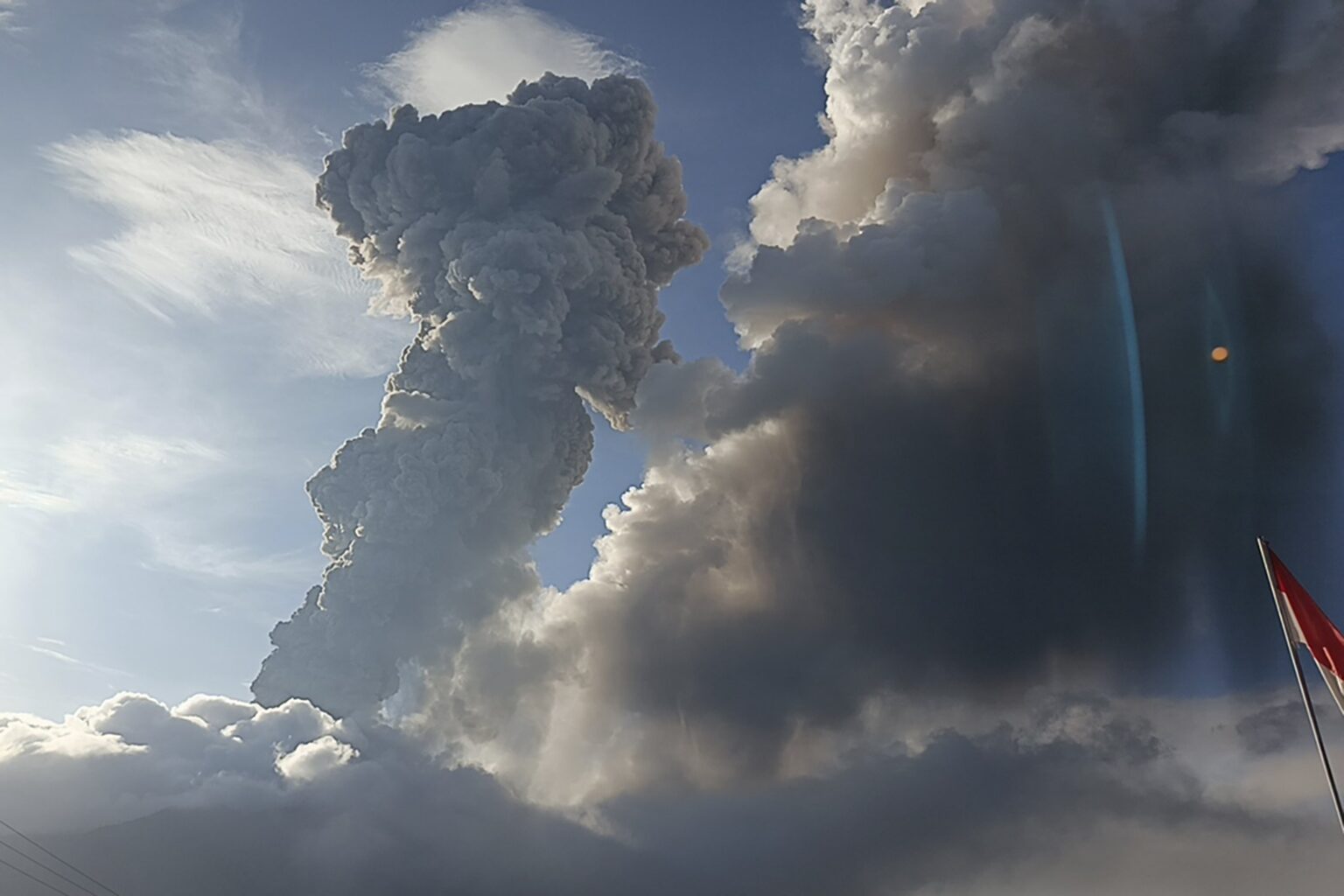Japan’s Meteorological Agency is investigating the possibility of a tsunami impact in its country following a massive volcano eruption near Indonesia.
Mount Lewotobi Laki Laki erupted again on Thursday, sending a plume of hot ash and gas rising more than 8,200 feet into the air, just days after a deadly eruption claimed 10 lives and left 64 people injured.
At least seven volcanic eruptions occurred in the mountain, with a large plume of black smoke rising around 8,000 meters above the crater.
While the latest eruption did not immediately result in casualties, it has intensified concerns about the safety of tens of thousands of people in the surrounding region.
So far, Japan has not reported any significant changes in tide levels.
How are Tsunamis Formed?
The 5,197-foot stratovolcano, located on the remote island of Flores in Indonesia’s East Nusa Tenggara province, has been in an active state since a powerful eruption occurred early on Monday morning.
The recent explosion unleashed a mixture of rock, lava, and gas that surged up to 0.6 miles from the crater, the country’s Center for Volcanology and Disaster Mitigation confirmed.
Thursday’s eruption left entire villages in distress displaced more than 10,000 residents.
Among the affected were at least 4,400 people who sought refuge in makeshift shelters as lava flows and ash clouds destroyed schools, homes, and infrastructure, including a convent on the island, which has a predominantly Catholic population.
Will Mount Lewotobi Laki-Laki Erupt Again?
Indonesia’s Volcanic Disaster Mitigation Center has raised Lewotobi Laki Laki’s alert level to the highest possible classification, and authorities have set the exclusion zone to a 4.3-mile radius around the volcano.
National Disaster Management Agency head, Suharyanto, urged residents who fled the area not to return home.
He said “Permanent relocation is considered as a long-term mitigation measure to anticipate eruption in the future.”
Plans are in place to move an additional 16,000 people out of harm’s way, with efforts focusing on ensuring that those displaced can find refuge in safer zones.
【NHKニュース速報 13:45】
インドネシア付近の火山で大規模噴火
日本への津波の有無を調査 気象庁— 特務機関NERV (@UN_NERV) November 7, 2024
Why Does Mount Lewotobi Laki-Laki Keep Erupting?
In the short term, the government has prioritized emergency shelters and aid distribution, but officials are also considering more permanent solutions for the communities at risk.
Mount Lewotobi Laki Laki is part of a pair of volcanoes that dominate the East Flores district.
The two volcanoes, known as the “husband-and-wife mountains,” have had a storied presence in folklore, but their powerful eruptions continue to remind residents of the very real dangers posed by the region’s geological instability.
The most recent eruption adds to a string of volcanic activity across Indonesia in recent weeks.
Earlier this year, in January, Mount Lewotobi Laki Laki prompted the evacuation of 6,500 people as it began spewing thick clouds of ash, forcing the closure of the island’s Fransiskus Xaverius Seda Airport.
While no major casualties or damage were reported then, the airport remains shut down due to continued seismic disturbances.
In late October, the nearby Mount Marapi in West Sumatra erupted multiple times, covering surrounding villages in ash, though again, no fatalities were reported.
These recurrent events are stark reminders of the volatility of Indonesia’s 120 active volcanoes, part of the larger “Ring of Fire” that circles the Pacific Ocean, one of the world’s most seismically active regions.
With a population of 280 million spread across more than 17,000 islands, Indonesia is particularly vulnerable to the catastrophic effects of volcanic activity.
Experts say that long-term measures, including improved early-warning systems and more extensive disaster-proofing of vulnerable areas, will be essential to minimizing the human and economic toll of future eruptions.
This article contains additional reporting from The Associated Press.
Read the full article here

